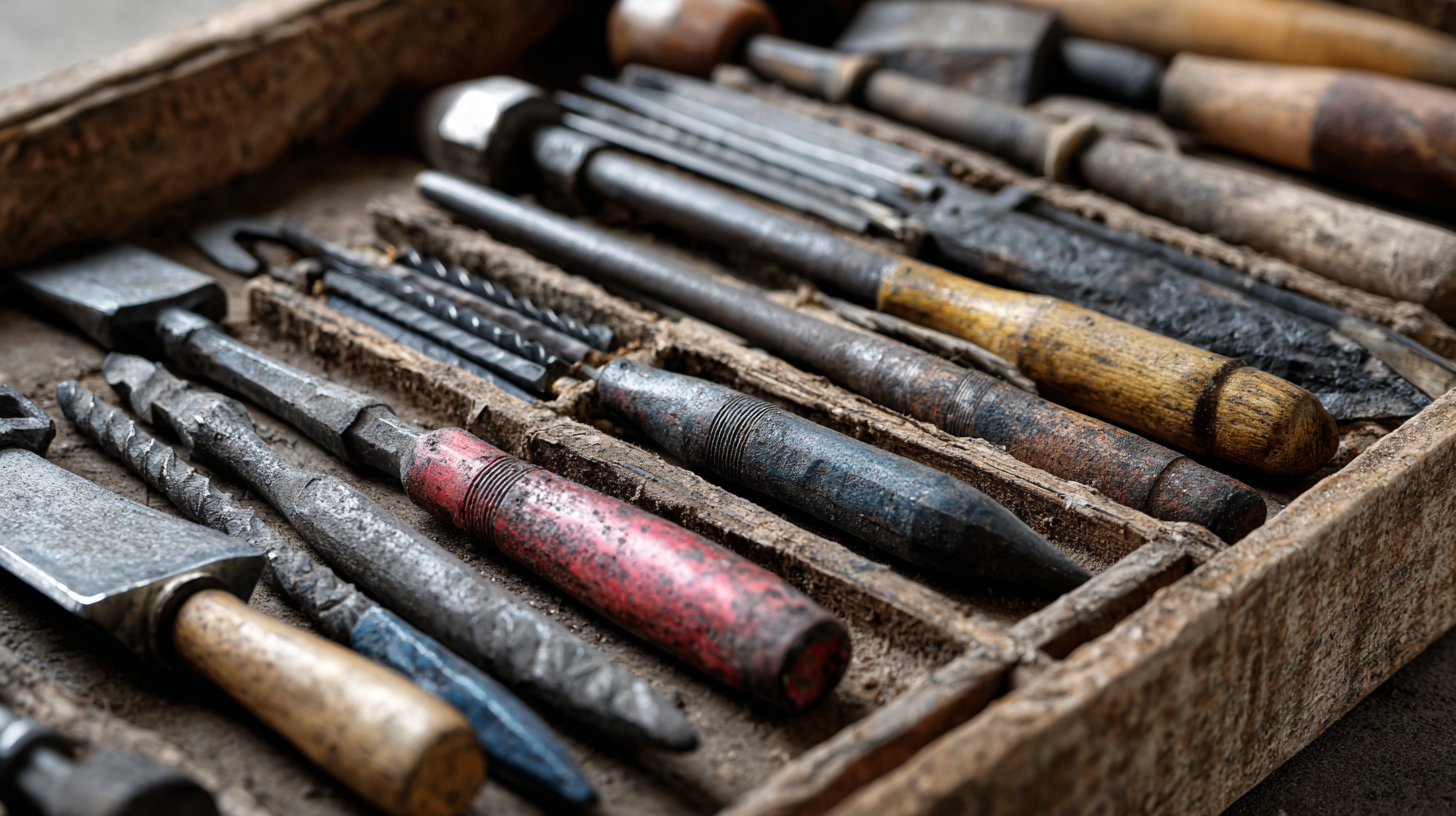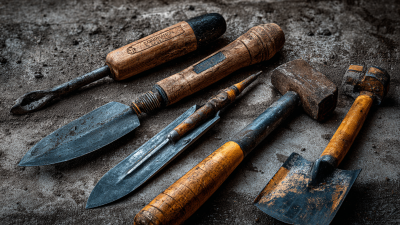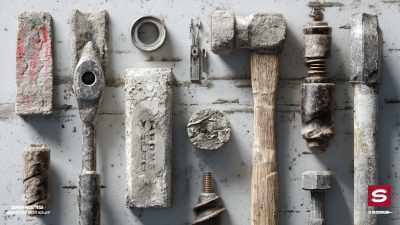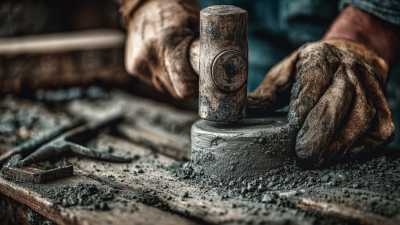Office USA: 706-658-1122 | Tech Support: 706-362-4813
Office Bulgaria: +359 431 64477
Mastering Concrete Tools: Essential Techniques for DIY Enthusiasts and Professionals
In the realm of construction and DIY projects, mastering concrete tools is essential for both enthusiasts and professionals alike. According to the latest industry reports from the American Concrete Institute, the demand for skilled labor in concrete work is projected to increase by 12% over the next decade, highlighting an ongoing need for effective training in concrete techniques.
Properly utilizing concrete tools can significantly enhance the quality and durability of projects, as evidenced by a study from the Portland Cement Association, which indicates that nearly 30% of construction failures are attributed to improper concrete handling. Understanding the various concrete tools available—ranging from mixers to trowels—and honing essential techniques can greatly streamline workflow and improve outcomes, making this knowledge invaluable for anyone looking to excel in the field.
Whether you are a homeowner taking on a new project or a seasoned contractor, the ability to effectively use concrete tools will elevate your craftsmanship to new heights.

Choosing the Right Concrete Tools for Your DIY Projects
Selecting the right concrete tools is crucial for ensuring the success of your DIY projects, whether you're a weekend warrior or a seasoned professional. Start with the basics, such as trowels, floats, and mixers, which form the foundation of any concrete work. Understanding the specific function of each tool can significantly affect the quality and efficiency of your project. For instance, a finishing trowel is essential for achieving a smooth surface, while a float helps eliminate imperfections and air bubbles in the mix.
In addition to basic tools, consider specialized equipment tailored to your project needs. If you're working on larger pours, investing in a concrete vibratory tool can help settle the mix and reduce the presence of voids. For decorative projects, stencils and stamps can enhance aesthetics. Evaluate the scale and complexity of your work to determine which tools will provide the best results, keeping in mind factors such as ease of use and maintenance.
By making informed choices about your concrete tools, you can elevate your craftsmanship, ensuring every project meets your standards of quality and durability.
Top 5 Techniques for Mixing Concrete Like a Pro
Mixing concrete is a fundamental skill for both DIY enthusiasts and professionals. To achieve a smooth and robust mixture, understanding the essential techniques is vital. The first technique involves measuring accurately. Using a precise ratio of cement, sand, and gravel, ideally in the proportions of 1:2:3, ensures a consistent blend. Employing a digital scale can help maintain these proportions, leading to better strength and workability in your final product.
Another critical technique is the mixing method itself. Start by dry mixing the components thoroughly before adding water, as this promotes an even distribution of materials. Gradually incorporate water, ensuring you reach the desired consistency without making the mixture too soggy. Using a power mixer or a barrel mixer can streamline the process, significantly reducing the time and effort required to achieve a uniform blend. Finally, maintaining an optimal mixing time, typically around 3-5 minutes, is crucial for developing the concrete’s full potential and ensuring its durability.
Mastering Concrete Tools: Essential Techniques for DIY Enthusiasts and Professionals - Top 5 Techniques for Mixing Concrete Like a Pro
| Technique | Description | Tools Required | Skill Level |
|---|---|---|---|
| Batch Mixing | Mixing ingredients in specific proportions to achieve desired consistency. | Concrete mixer, shovel, wheelbarrow. | Intermediate |
| Hand Mixing | Combining concrete mix and water manually for small projects. | Mixing container, trowel, water source. | Beginner |
| Using Additives | Incorporating chemicals to enhance performance characteristics. | Additives, mixing tools, water source. | Advanced |
| Mixing for Specific Use | Tailoring mixtures for different applications (e.g., floors, slabs). | Concrete mix design guide, measuring tools. | Expert |
| Proper Curing Techniques | Methods to keep concrete moist to prevent cracking. | Curing blankets, sprayers. | Intermediate |
Essential Safety Tips for Handling Concrete Tools Safely
When working with concrete tools, safety should always top the priority list. According to the U.S. Bureau of Labor Statistics, construction workers face a significant number of injuries each year related to tool mishandling, with over 50,000 incidents reported annually. To mitigate risks, understanding essential safety tips is crucial for both DIY enthusiasts and professionals alike.
Tip 1: Always wear appropriate personal protective equipment (PPE), including safety goggles, gloves, and steel-toed boots. These items provide necessary protection against potential injuries from flying debris or equipment mishaps. Additionally, ensure your work area is well-ventilated, especially when using power tools that may emit harmful fumes.
Tip 2: Familiarize yourself with the specific concrete tools you'll be using. Each tool has dissimilar operating procedures, and understanding these can prevent dangerous errors. For instance, before operating a concrete mixer, consult the instruction manual and undertake a walkthrough of the equipment.
By implementing these safety precautions, both seasoned pros and newcomers can significantly reduce the likelihood of accidents while enjoying the rewarding experience of working with concrete.
4 Key Steps for Finishing Concrete to Achieve a Professional Look
Finishing concrete is a crucial step in achieving a professional look, whether you're a DIY enthusiast or a seasoned professional. The process involves four key steps that ensure a smooth, durable surface that enhances the overall aesthetic of your project. First, always begin by prepping your concrete surface thoroughly. This means cleaning off any debris, dust, or lingering curing compounds that could impede your finishing efforts.
Next, focus on the application of a finishing compound, which helps to fill in any imperfections and create a uniform surface. When working with finishing tools, remember that consistency is vital. Use a trowel to spread the compound evenly, then utilize a float to smooth out any rough areas.
**Tips:** Always keep your tools clean, as any residue can alter the finish of your concrete. Additionally, for a glossy look, consider applying a concrete sealer once your project has cured. This not only enhances the appearance but also provides protection against the elements. Lastly, don't rush the curing process; allowing concrete to cure completely before applying any finishing touches will lead to a more resilient result.

3 Common Mistakes to Avoid When Working with Concrete Tools
When working with concrete tools, many DIY enthusiasts and professionals make common mistakes that can compromise their projects. One frequent misstep is failing to properly prepare the concrete mix. An incorrect ratio of water to cement can lead to weak and brittle concrete that lacks the strength necessary for structural integrity. It’s essential to follow manufacturer guidelines and perform test batches to ensure optimal consistency.

Another common error is neglecting safety precautions. Many workers underestimate the need for personal protective equipment (PPE) such as gloves, goggles, and respirators. The dust generated during mixing and cutting can be harmful, and concrete dust can impair vision when working on-site. Additionally, improper lifting techniques can lead to back injuries, emphasizing the need for proper training and safety measures.
Lastly, many overlook the importance of maintaining their tools. Failing to clean tools after use can lead to corrosion and diminished performance over time. Regular maintenance, including checking for wear and tear, ensures that tools operate efficiently and lasts longer, ultimately saving time and money on replacements. By avoiding these common mistakes, individuals can enhance their concrete work and achieve better results in their projects.
Related Posts
-

10 Best Concrete Tools That Will Transform Your Construction Projects
-

Innovative Examples of Concrete Hand Tools Transforming Construction Projects
-

Exploring the Unique Features and Applications of the Best Concrete Tools for Global Buyers
-

Top Tips to Identify Quality Suppliers of Best Concrete Hand Tools with a Comprehensive Checklist
-

Global Buyers Trust in China's Best Concrete Hand Tools: Quality and Innovation at Your Fingertips
-

Revolutionizing Your DIY Projects: The Ultimate Guide to Essential Concrete Tools
